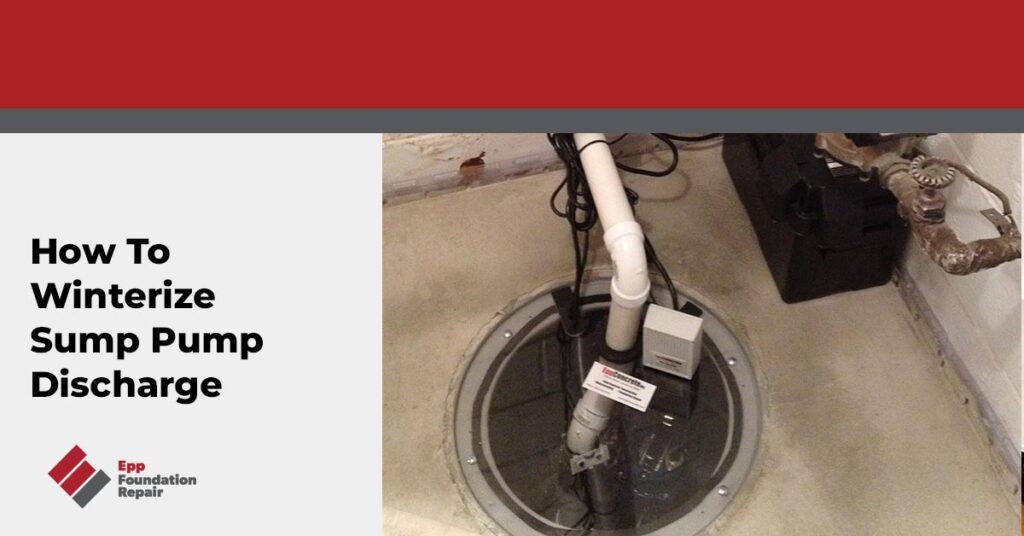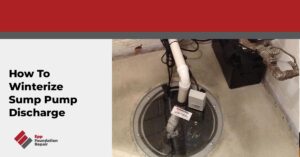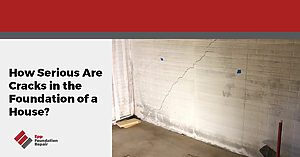Wondering how to winterize sump pump discharge? If so, you’ve landed on the right page because that’s what we’re going to talk about in this article. We’ll review why you don’t want a frozen sump pump hose, how to stop your sump pump hose from freezing, and more.
What Is A Sump Pump?
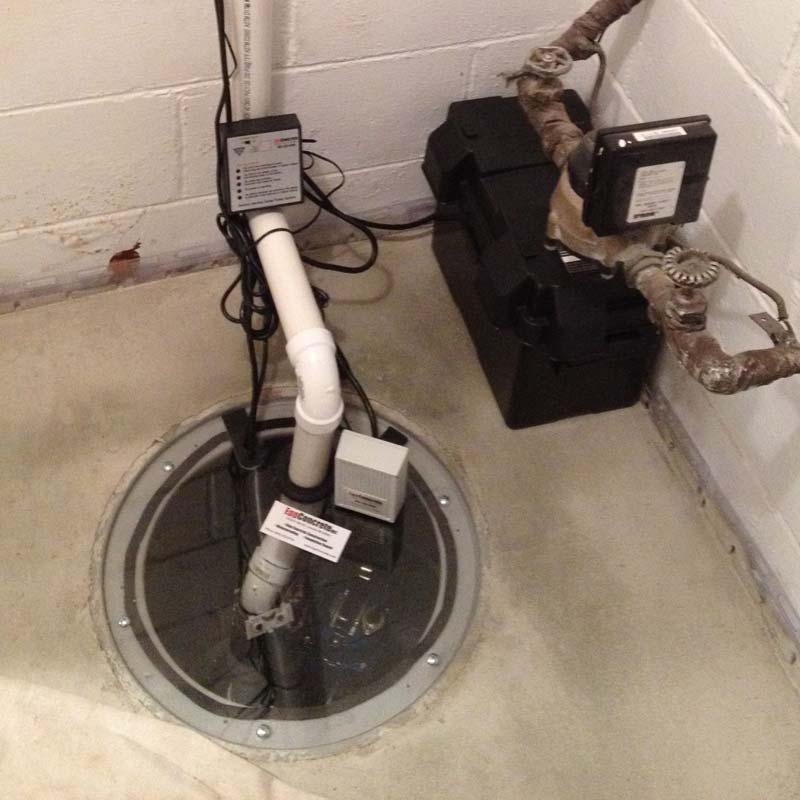
A sump pump is a mechanical device used to prevent water damage to a foundation. It’s typically installed in a sump pit, a small basin located in the basement or the crawl space. A sump pump is designed to remove water from this pit and pump it away from the foundation.
How Does A Sump Pump Work?
The mechanism behind a sump pump is relatively straightforward. When water enters the sump pit, a float or pressure switch is triggered, signaling the pump to turn on. The water is sucked up through a pipe and discharged away from the foundation. Depending on the size and capacity of the sump pump, it can remove thousands of gallons of water per hour.
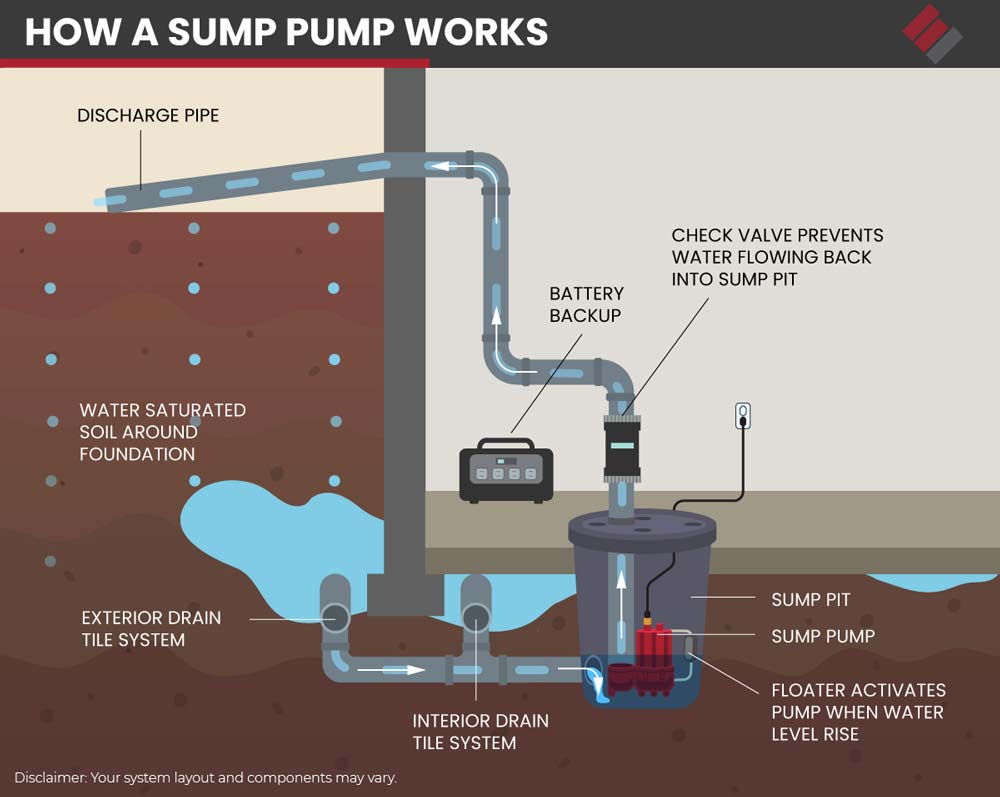
Sump pumps are helpful in areas prone to heavy rainfall or flooding, as they efficiently and effectively manage excess water. They can also be installed in properties with a high water table or poor drainage systems.
Two Types Of Sump Pumps
There are two main types of sump pumps: submersible and pedestal.
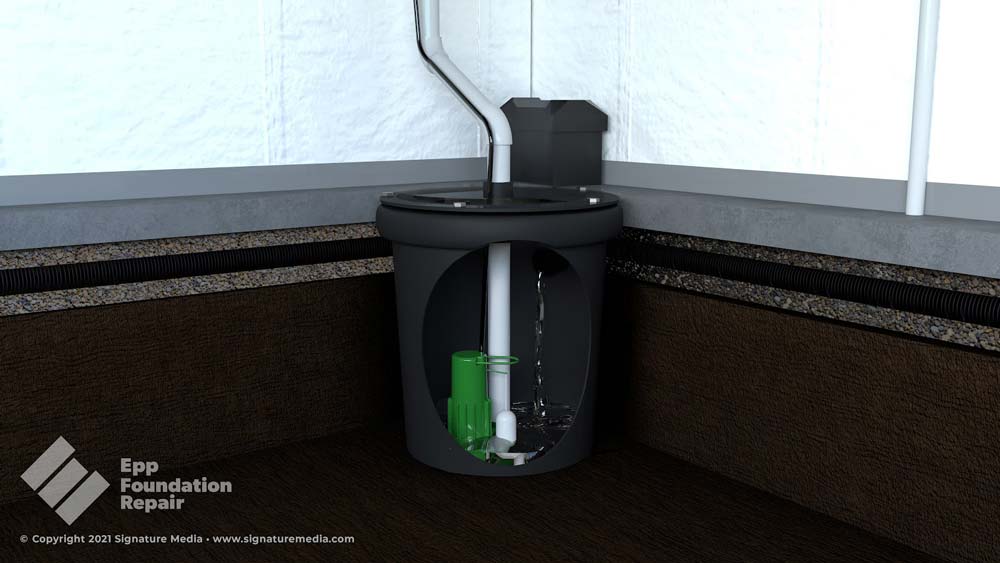
Submersible sump pumps are designed to be placed directly in the sump pit and are more commonly used in residential properties.
Pedestal sump pumps, on the other hand, are mounted above the pit and are typically used in commercial and industrial settings.
Why You Don’t Want A Frozen Sump Pump Hose
Whether you live in an area with a high water table, frequent rainfall, or near a body of water, a sump pump is essential for a dry and comfortable home. However, one problem might affect your sump pump’s efficiency and leave you with a wet basement: a frozen sump pump hose.
During cold winter months, water in the sump pump hose can freeze and clog the discharge line. This can cause a backup in the system, leading to a possible sump pump failure and potential flooding in the basement. The best way to avoid this problem is by ensuring the hose is adequately insulated, heated, or buried below the frost line. Additionally, having a professional install your sump pump system is crucial since they can provide expert advice and solutions to prevent freezing and other issues.
In addition to potential flooding, a frozen sump pump hose can lead to other problems. It can cause the motor to overwork, leading to a shorter lifespan for your sump pump and higher energy bills. Moreover, if your sump pump runs continuously due to a frozen hose, it can increase wear and tear on the system, leading to costly repairs or replacement.
Taking care of your sump pump system is essential to ensure longevity and efficiency. Checking the sump pump hose for clogs, checking the battery backup, and replacing the primary sump pump every 7 to 10 years can help prevent issues and keep your home dry. Investing in a sump pump alarm can also notify you of potential problems, giving you time to address them before they become costly and irreversible.
Read more about – Sump pump alternatives.
How To Winterize A Sump Pump Discharge Line
During the colder months, the water expelled by the sump pump can freeze inside the discharge line, making it difficult or impossible for the pump to do its job. A frozen discharge line can also cause the sump pump to work harder than necessary, increasing energy consumption and leading to higher bills.
Fortunately, a few steps can help prevent the discharge pipe from freezing and keep your sump pump running smoothly all winter. Here are some tips on how to stop your sump pump hose from freezing:
- Adjust the discharge angle – The hose should be sloped downward gradually away from the sump pump outlet, and there should be no loops or dips in the hose. A well-graded hose ensures proper drainage, and water will not accumulate and freeze, causing blockages or expansion and contraction of the hose.
- Wrap the pipe in heat tape – Another effective way to prevent freezing is to wrap heat tape around the discharge pipe. This will help to keep the water inside the hose warm and prevent it from freezing. Heat tape is affordable and easy to install, and it can be a lifesaver when it comes to keeping your sump pump running smoothly.
- Insulate the hose – Adding insulation to the discharge pipe can also help to prevent freezing. This can be achieved by wrapping the hose in foam insulation or using pipe sleeves. Insulation will help to keep the water inside the hose warm and prevent it from freezing.
- Keep the hose clean – It’s essential to ensure the discharge hose is free from debris and other obstructions that can cause blockages. A clean hose will allow water to flow freely and reduce the chances of freezing.
- Install a battery backup – A battery backup can prevent a sump pump hose from freezing by providing a constant power supply to the sump pump, even during power outages. During the winter months, power outages are not uncommon, and when this happens, the sump pump may stop working, exposing the hose to freezing temperatures. However, with a battery backup, the sump pump will continue to operate regardless of power supply interruption, preventing the hose from freezing.
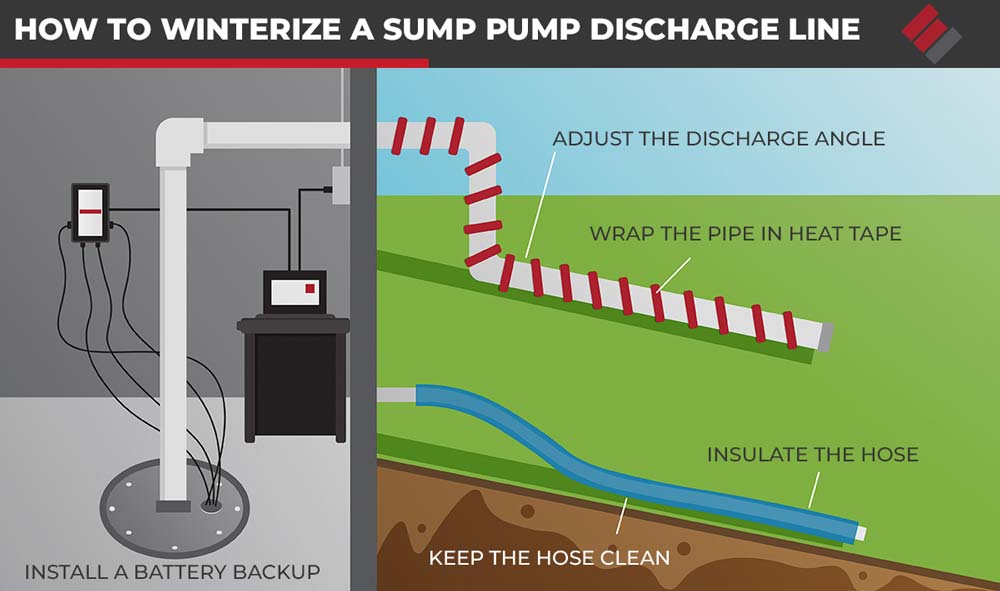
By following these simple steps, you can prevent your sump pump hose from freezing and ensure that your sump pump is working efficiently all year round.
How To Know If Your Sump Pump Is Frozen
Note: The only way a sump pump will actually freeze is if the pump itself is located outside the house. No sump pump inside a basement is going to freeze. However, the discharge lines outside the house could freeze.
Common signs of a frozen sump pump include the following:
- No water drainage – One of the most apparent signs of a frozen sump pump is a complete lack of water drainage. If the pump fails to remove water from the sump pit after heavy precipitation, it could be due to it being frozen. Additionally, if the discharge pipe is covered with snow or ice, it may indicate a blockage preventing water flow. In this case, it’s advisable to carefully check the discharge line and remove any ice or snow buildup.
- The pump is making strange noises – Another indication of a frozen sump pump is loud or unusual sounds emanating from the motor. If the pump is working but making strange noises, it could be due to ice buildup in the motor and impeller. Thus, turning off the pump and disconnecting it from the power source is vital. Afterward, waiting for the ice to melt before restarting it is advisable.
- Ice buildup – Another way to tell if your sump pump is frozen is to check if the pump’s exterior is covered in ice or moisture residue. If you notice ice buildup on the motor, switch, or power cord, it could indicate the pump is frozen, which may cause the unit to short circuit or damage the pump components.
Sump Pump Winter Maintenance
With the arrival of winter, homeowners need to ensure their sump pump is functioning correctly.
Test the sump pump to make sure it’s functioning properly
Pour some water into the sump pit to activate the pump and ensure it discharges water away from the house.
Clean the sump pump
Cleaning your sump pump helps prevent any debris or dirt from clogging and damaging the pump. If there’s dirt or debris in the pump, it can cause the float switch to malfunction, leading to failure.
Check the discharge line
Another essential aspect of sump pump winter maintenance is checking the discharge line. The line can freeze during winter, causing water to back up into the sump pump, leading to flooding. To prevent this, ensure the discharge line is sloped away from the house and not obstructed by debris.
Insulate the discharge line
Insulating the discharge line will prevent it from freezing.
Have a battery backup system
It’s critical to have redundancy in a sump pump system. This means having a battery backup system in case of a power outage.
Install a high-water alarm
A high-water alarm will alert you before the sump pit overflows.
If you’re concerned about winterizing your sump pump, contact us today to schedule an evaluation. We serve areas in four states: Nebraska, Iowa, Kansas, and Missouri.

